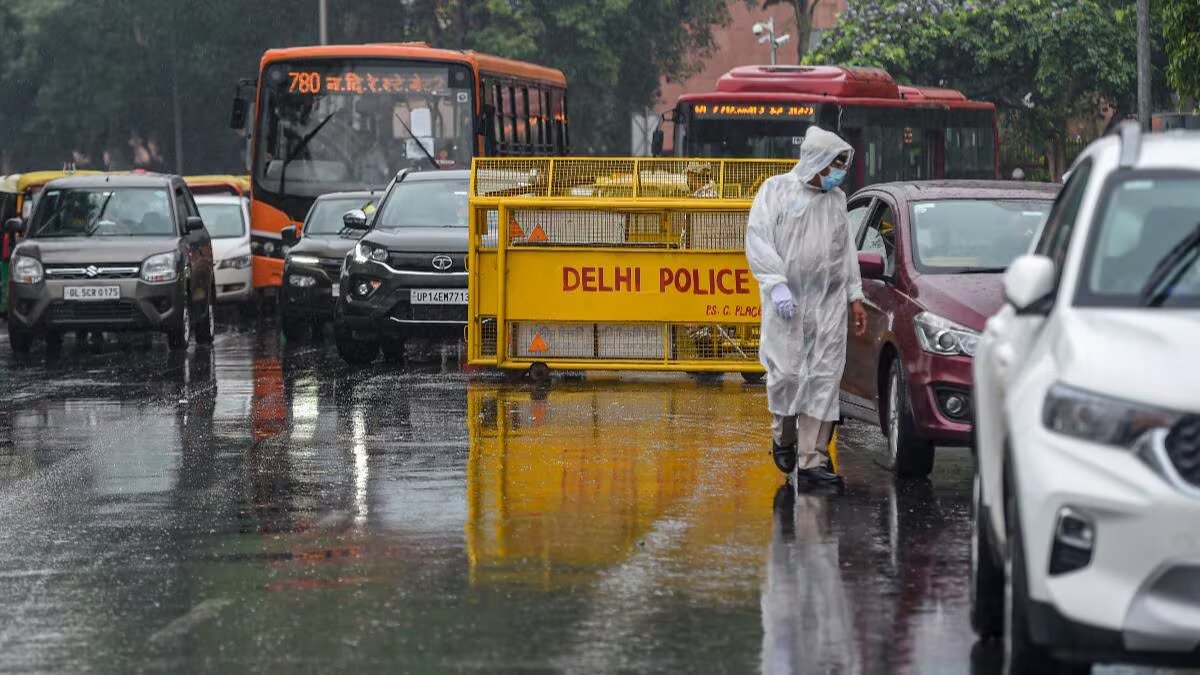By – Prakarsh Kastwar
An orange notice means there’s a chance the weather will get worse, disrupting travel and posing a risk to people’s lives and property.
The India Meteorological Department (IMD) has issued an orange advisory for Wednesday, meaning that the weather in Delhi could worsen, causing disruptions and potential dangers to life and property, despite the fact that most regions in the Capital had light rainfall.
Mayur Vihar had 110.5mm of rain between 5:30am and 8:30am, causing waterlogging. Rain, both locally and in Uttarakhand and Himachal, was forecast to raise the level of the Yamuna. The river was running at 205.10m at 10 a.m., under an orange alert, a severe level warning to ensure people are prepared to face problems in advance of substantial weather changes. A yellow alert, indicating that people should keep informed about severe weather, is in effect for moderate showers on Thursday.
The Central Water Commission predicted that the river would rise to 205.16m by 1pm on Wednesday. The danger level is set at 205.33m.
“There may be significant traffic disruption on roads.” “Water accumulation may occur in low-lying areas and on roads,” according to the IMD website.
The Safdarjung meteorological station, which represents Delhi’s weather, recorded 368.6mm of rain in the 24 hours ending at 8:30 a.m. on Wednesday. This is more than the monthly long-term average of 209.7mm, and it is the second-highest July rainfall in the last three years. In the last 15 years, Delhi has experienced three 300mm rainfalls. In July 2021, 507.1mm of rain fell. In 2013, Delhi experienced 340.5mm of rain during the course of the month.
On the 8th of July, the Capital had its highest rainfall for a July day in 21 years, with 126.1mm of rain falling between 8.30am and 5.30pm, causing mayhem on the streets and showing a lack of readiness for the monsoon.
On July 12, low-lying neighborhoods of the Capital were inundated, prompting evacuations, as rising water levels in the Yamuna broke a 45-year-old record. The Yamuna reached 208.08 meters, breaking the previous record of 207.49 meters set on September 6, 1978.
On July 14, ITO and Mathura Road were swamped as the army and navy were sent to stem the water. The situation on the line deteriorated after a drain regulator failed, while five of the 32 gates at the barrage along the old ITO bridge were also clogged. The swelling Yamuna waters entered one of Delhi’s busiest intersections.
Rainfall between trace and 2.4mm is classified as very light, 2.5mm and 15.5mm as light, 15.6mm and 64.4mm as moderate, 64.5mm and 115.5mm as heavy, and 115.6mm or higher as extremely heavy, according to the IMD.
